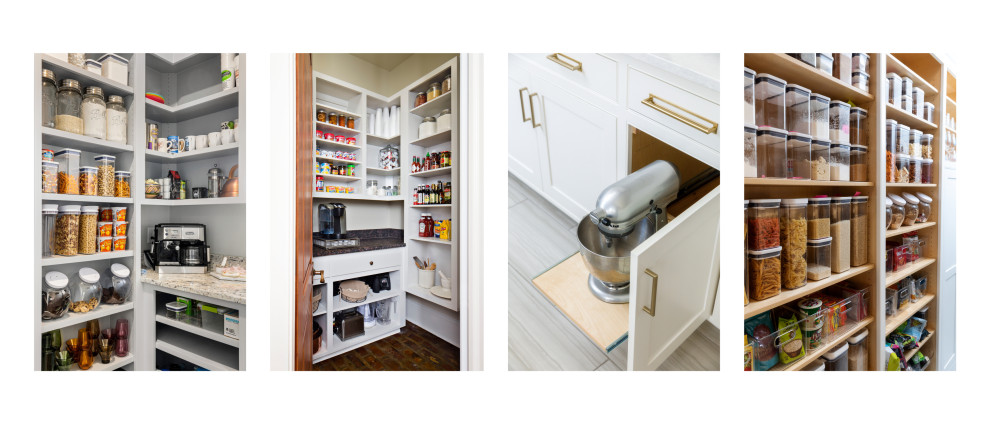Perfecting a Bread-Maker’s Kitchen - The Art of Bread Making

With the growing popularity of bread-making at home, more people are exploring how to craft high-quality, healthier bread right in their kitchens. A well-designed
kitchen doesn’t just look great; it makes each step in the baking process
smoother and more enjoyable. At Ourso Designs, we’re always here to help you
build a kitchen that works for all your culinary passions—especially baking.
1. Designing the Ideal Bread-Maker’s Kitchen
In recent years, home
bread-making has evolved with the help of innovative appliances and specialized
tools, making it easier than ever to create quality bread in a home kitchen.
Here’s a look at essential elements and modern appliances that can enhance the
bread-making experience:
- Counter Space & Workflow: Bread-making requires ample room for kneading, mixing, and shaping dough. Prioritizing open countertop space allows for a seamless workflow, while keeping the area clutter-free provides a clear, functional workspace. Bread-making is a rhythmic process, and a dedicated prep zone helps make it an enjoyable one.
- Storage Solutions: Storing large quantities of flour, yeast, and baking essentials calls for thoughtful organization. Deep pull-out drawers or dedicated pantry cabinets work well, especially when paired with clear containers that keep ingredients fresh and visible. Tools like rolling pins and dough scrapers can be stored vertically or in designated bins to free up drawer space and keep essentials close.
- Special Features: Modern kitchens can integrate features that simplify bread-making and elevate results:
Proofing Drawers: Proofing drawers, sometimes included in high-end ovens, provide a stable, warm environment for dough to rise evenly, speeding up proofing times and ensuring consistent results.
Steam Injection Ovens: Designed specifically for bread, these ovens replicate professional bakery conditions with steam injection, which is essential for crust formation. Compact, countertop models like the Anova Precision Oven offer this feature, as well as precise temperature control for various bread types.
Countertop Bread Makers: Compact and highly functional, countertop bread makers are a great option for those who want fresh bread with minimal effort. These appliances mix, knead, proof, and bake all in one unit, allowing for easy experimentation with different bread types, crust textures, and even gluten-free options.
With these appliances
and design choices, a modern bread-making kitchen can transform the baking
process into a seamless, enjoyable experience. From countertop essentials to
specialized technology, today’s kitchen innovations allow every home baker to
create delicious, bakery-quality bread with confidence and ease.

Images are property of Ourso Designs
2. The Art of Bread Making
With your kitchen set up for baking, the process of bread-making
becomes a lot more enjoyable. While bread-making follows a general sequence,
each type of bread—whether sourdough, ciabatta, focaccia, or brioche—has unique
qualities and steps that make it special.
- Essential Tools & Ingredients: A few core tools can make the bread-making process smoother. Start with large, sturdy mixing bowls and a quality dough scraper to handle sticky dough without tearing. A bench scraper is useful for shaping, while a thermometer helps ensure you’re proofing and baking at ideal temperatures. For a professional touch, a bread-proofing basket (or banneton) is great for shaping and adding patterns to your loaf.
Pantry staples like high-quality flour and yeast are essential, and many bakers enjoy experimenting with natural starters, especially for sourdough, to bring out complex flavors.
- The General Bread-Making Process: Bread-making generally includes combining ingredients, kneading, allowing the dough to rise (fermentation), shaping, a second proofing, and then baking. Each step affects the texture, structure, and flavor, making it essential to follow a recipe designed for the type of bread you’re creating. For example, sourdough and ciabatta often involve high-hydration doughs for a lighter crumb, while brioche requires enriching ingredients like eggs and butter for a soft, airy texture.
- Troubleshooting Tips: Bread-making can sometimes involve a bit of trial and error, so here are a few common issues to keep an eye on:
Under-proofing: If your bread is dense or hasn’t risen enough, it may need more time in a warmer spot for the yeast to develop.
Over-proofing: If your dough deflates easily, it may have risen too long. Reduce the proofing time or proof it in a cooler space.
Adjusting for Temperature & Humidity: Since bread dough is sensitive to climate, adjust flour or water as needed. Wetter doughs often create airy crumbs, while firmer doughs offer more structure.
Some of our team's 'Art'

